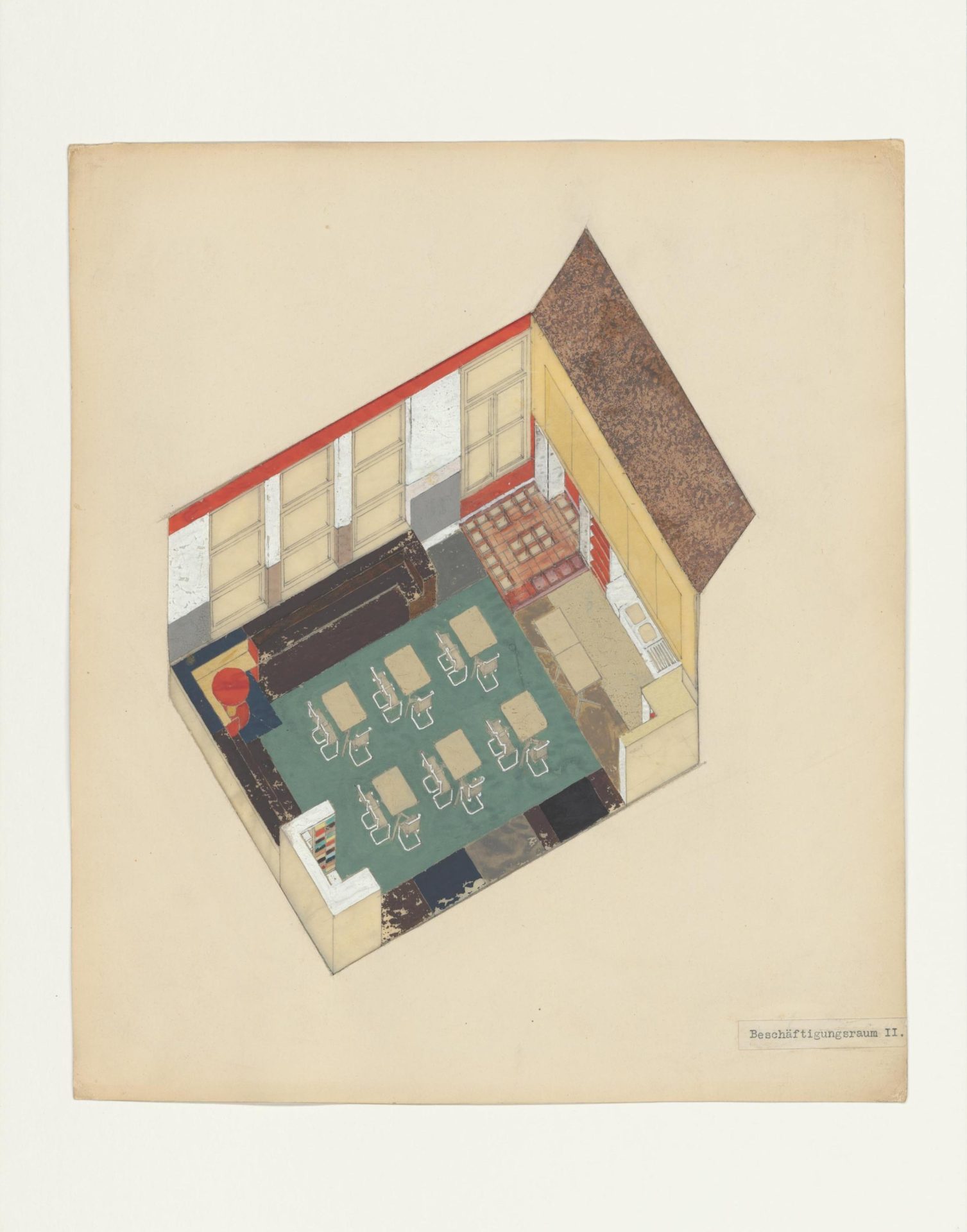The estates of Franz Singer and Friedl Dicker
Nonumy eirmod tempor invidunt ut labore et dolore magna aliquyam erat, sed diam voluptua. At vero eos et accusam et justo duo dolores et ea rebum. Stet clita kasd gubergren, no sea takimata sanctus est.

Lorem ipsum
-
In 1970 the Bauhaus-Archiv, which was still based in Darmstadt at the time, dedicated its first exhibition to the Bauhaus artists Friedl Dicker and Franz Singer. The occasion for the show was an extensive donation by Singer’s sister Frieda Stoerk.
Friedl Dicker and Franz Singer grew up in Vienna and attended Johannes Itten’s private art school, where they met around 1917. In 1919 they followed their teacher to the newly founded Bauhaus in Weimar and completed their studies there four years later. They then founded the Werkstätten Bildender Kunst (Fine Arts Workshops) in Berlin-Friedenau, where they produced stage sets, theatre costumes, textiles, book covers and jewellery. In 1925 they returned to Vienna to develop their highly successful joint studio. There they created furniture designs, interior designs and buildings. The rise of Nazism, which made the two Jewish artists’ professional situation increasingly difficult, ultimately led them to move the centre of their lives abroad in 1933/34. Dicker, who increasingly devoted herself to art education from 1931, went to Prague. She was deported to the Theresienstadt concentration camp in 1942 and murdered at Auschwitz in 1944. Singer moved to London, where he continued to work as an architect. He died in 1954 during a visit to Berlin.
In 2019 art historian Katharina Hövelmann began researching and cataloguing the collection donated by Frieda Stoerk and preserved at the Bauhaus-Archiv / Museum für Gestaltung: around 3,700 photographs and around 3,500 architectural plans and drawings by Dicker and Singer. The photographs, in particular, provide a detailed documentation of the interior design projects realised by the two architects, mainly in Vienna. In addition, the collection includes the studies Dicker and Singer created in the preliminary course at the Bauhaus as well as coloured perspective drawings and so-called axonometric drawings, which Hövelmann’s work made it possible to link with the relevant projects and clients for the first time. The cataloguing project provided new insights into the working methods and design processes the joint studio had developed at the Bauhaus. These led to the exhibition “Studio Bauhaus, Vienna” at the Wien Museum in 2022, curated by Katharina Hövelmann, Andreas Nierhaus and Georg Schromm. The exhibition was accompanied by a publication of the same name, which includes essays and the first catalogue raisonné of the Dicker-Singer joint studio’s work.

